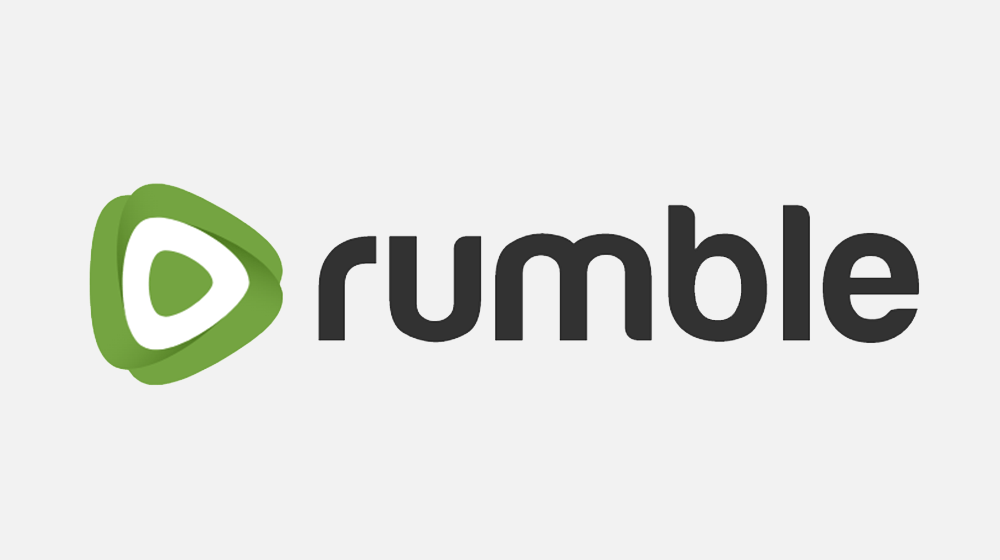Rumble is quickly gaining traction as a preferred platform for content creators and viewers alike. With its focus on free speech and user-generated videos, it offers an alternative to more established platforms. But who exactly brought this innovative platform to life? In this post, we will explore the inception of Rumble, its mission, and the minds behind its creation. Let’s delve deeper into the story of how
The Founding of Rumble

Rumble was founded in 2013 by Chris Pavlovski, with a vision of providing a platform where content creators could freely express themselves without worrying about traditional censorship. Chris, a tech-savvy entrepreneur from Canada, understood the digital landscape and recognized the need for an alternative video-sharing platform that prioritized free speech. With a growing number of internet users feeling disillusioned by mainstream platforms, Rumble aimed to provide a solution that catered to diverse voices and opinions. Here's a closer look at some of the key highlights from
- 2013: The Year It All Began - Chris Pavlovski and his team launched Rumble, embracing the emerging trend of user-generated content.
- User-Centric Design - The platform was built with the user experience in mind, allowing creators to share videos easily while receiving fair compensation for their work.
- A Mission for Free Speech - Rumble established itself as a platform dedicated to promoting free expression, standing out in a landscape increasingly focused on censorship.
- Growth Through Innovation - Rumble continually evolved its platform, incorporating features like monetization options and reach expansion to foster a diverse content ecosystem.
From its humble beginnings, Rumble was driven by the desire to empower creators and connect them with audiences. As the platform gained momentum, it attracted a plethora of content ranging from news and politics to entertainment and educational videos, reflecting a broad spectrum of perspectives.
The Vision Behind Rumble

The vision behind Rumble revolves around creating a platform that champions free expression and prioritizes user autonomy. Launched as an alternative to mainstream video-sharing services, Rumble aims to provide content creators with an environment where they can share their work without the fear of censorship or de-platforming. This vision resonates deeply with users who value their voices and seek out platforms that align with their beliefs.
One of the central tenets of Rumble's vision is to empower creators. By offering monetization options that are often more generous than those found on other platforms, Rumble attracts a diverse array of content creators—from independent journalists to comedians. With its vibrant ecosystem,
Rumble also emphasizes transparency in its operations. Unlike some other social media platforms, it aims to provide clear guidelines on content moderation. This transparency boosts user trust, as creators understand the rules and can navigate them without apprehension.
Another key aspect of Rumble's vision is its commitment to technological innovation. The platform continuously seeks to enhance user experience through updates and improvements, ensuring that it remains competitive in the ever-evolving digital landscape. In essence, Rumble's vision is about fostering a community where free speech flourishes, creators are rewarded fairly, and users can enjoy a diverse array of content without bias.
Key Figures in Rumble's Development

The growth and success of Rumble can be attributed to the efforts of a few key individuals who played vital roles in its development. Understanding who these figures are helps us appreciate the platform's evolution and its commitment to fostering free speech.
- As the CEO and co-founder of Rumble, Chris Pavlovski has been instrumental in guiding the platform's vision and strategy. Under his leadership, Rumble has grown exponentially, attracting millions of users and content creators alike. Pavlovski is passionate about free expression and has often voiced his commitment to providing a platform that is fair and transparent. - Another key player in Rumble's rise is Jim O’Neill, a co-founder with extensive experience in tech development and entrepreneurship. His expertise has been pivotal in shaping Rumble's technological framework. O'Neill's contributions ensure that the platform remains user-friendly and scalable, accommodating a growing number of users and content creators. - While not individual figures, the community of content creators on Rumble has significantly influenced its trajectory. Many have joined Rumble in search of alternatives to censored platforms, and their participation has enriched the platform's content and appeal, allowing it to attract a diverse audience.
Together, these key figures embody Rumble's mission and vision, driving the platform toward a future where all creators can share their voices freely and where innovation continues to thrive.
Rumble's Growth and Impact

Rumble has experienced remarkable growth since its inception. Established as an alternative to traditional social media platforms, it emerged in 2013 as a haven for free expression, particularly for users dissatisfied with censorship and biased moderation on major platforms. Its rise can be attributed to several interrelated factors:
- User Freedom: Rumble has positioned itself as a platform that champions free speech. This mantra has attracted users who feel their voices are stifled elsewhere. The commitment to minimal moderation policies allows content creators to post diverse viewpoints without fear of removal, leading to a more vibrant community.
- Content Diversity: From political commentary to lifestyle vlogs, Rumble hosts a wide range of content. This diversity attracts a broad audience, making it a go-to platform for various niches. The variety ensures there's something for everyone, fostering engagement and boosting creator revenues.
- Partnerships and Collaborations: Rumble has built strategic partnerships, particularly with conservative figures and influencers. These collaborations have amplified its visibility and legitimacy, helping to draw even more users to the platform.
The impact of Rumble is visible not only in its user growth but also in how it influences the broader online ecosystem. It has sparked discussions about censorship, prompting other platforms to reconsider their moderation policies. As a result, Rumble is challenging the status quo and showcasing the importance of having multiple platforms where diverse opinions can thrive.
Conclusion
In conclusion, Rumble has successfully carved out its niche as a leading platform in the social media landscape. By focusing on principles of free speech and user empowerment, it has attracted a dedicated user base seeking alternatives to mainstream platforms. As digital content consumption continues to evolve, Rumble's commitment to diversity and open discourse positions it as a pivotal player in the ongoing conversation about the future of online communication.
As Rumble moves forward, it will be interesting to see how it scales its operations while maintaining its core values. Will it continue to grow, or will it face challenges from competitors? Whatever the outcome, Rumble has undoubtedly made its mark and raised essential questions about freedom of expression in our digital age. As users become increasingly savvy about their choices in social media, platforms like Rumble are a reminder of the power of alternatives.










